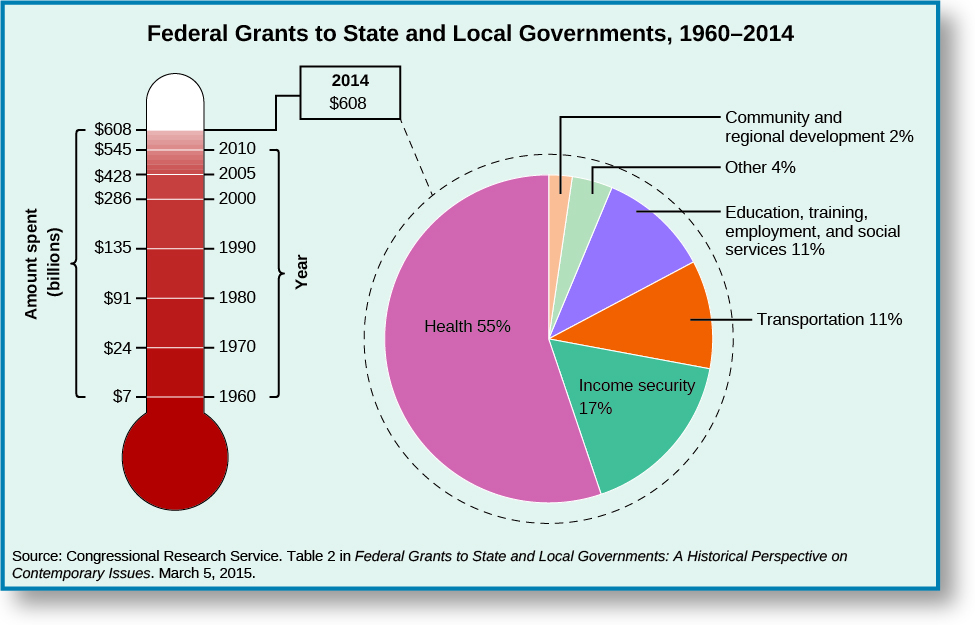| << Chapter < Page | Chapter >> Page > |
During the 1960s and 1970s, funding for federal grants grew significantly, as the trend line shows in
[link] . Growth picked up again in the 1990s and 2000s. The upward slope since the 1990s is primarily due to the increase in federal grant money going to Medicaid. Federally funded health-care programs jumped from $43.8 billion in 1990 to $320 billion in 2014.

The federal government uses grants and other tools to achieve its national policy priorities. Take a look at the National Priorities Project to find out more.
The national government has greatly preferred using categorical grants to transfer funds to state and local authorities because this type of grant gives them more control and discretion in how the money is spent. In 2014, the federal government distributed 1,099 grants, 1,078 of which were categorical, while only 21 were block grants.
There are a couple of reasons that categorical grants are more popular than block grants despite calls to decentralize public policy. One reason is that elected officials who sponsor these grants can take credit for their positive outcomes (e.g., clean rivers, better-performing schools, healthier children, a secure homeland) since elected officials, not state officials, formulate the administrative standards that lead to the results. Another reason is that categorical grants afford federal officials greater command over grant program performance. A common criticism leveled against block grants is that they lack mechanisms to hold state and local administrators accountable for outcomes, a reproach the Obama administration has made about the Community Services Block Grant program. Finally, once categorical grants have been established, vested interests in Congress and the federal bureaucracy seek to preserve them. The legislators who enact them and the federal agencies that implement them invest heavily in defending them, ensuring their continuation.
Reagan’s “devolution revolution” contributed to raising the number of block grants from six in 1981 to fourteen in 1989. Block grants increased to twenty-four in 1999 during the Clinton administration and to twenty-six during Obama’s presidency, but by 2014 the total had dropped to twenty-one, accounting for 10 percent of total federal grant outlay.

Notification Switch
Would you like to follow the 'American government' conversation and receive update notifications?